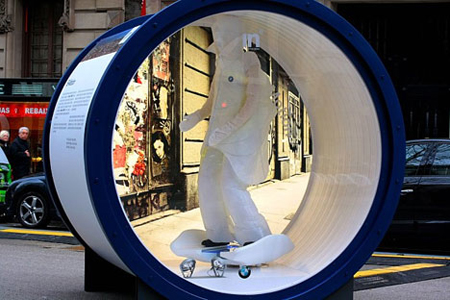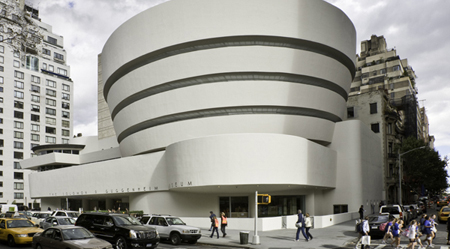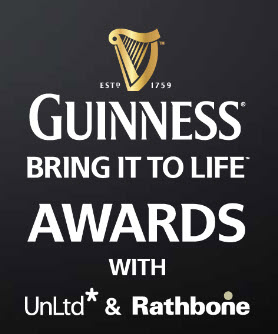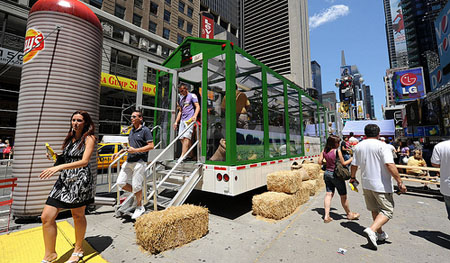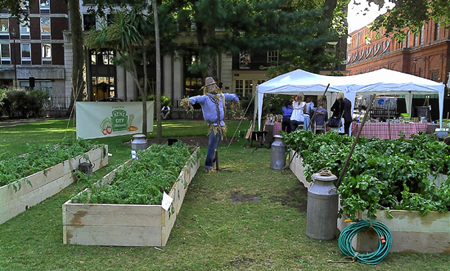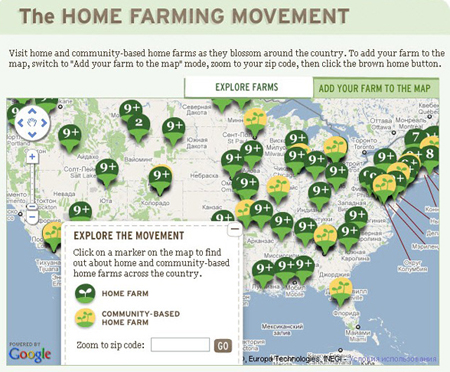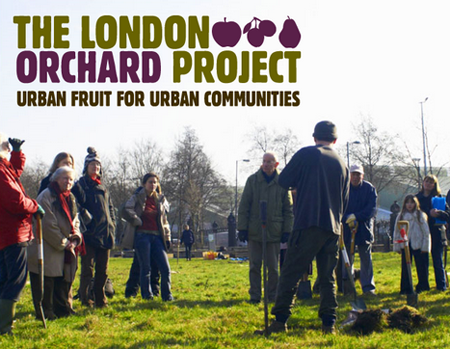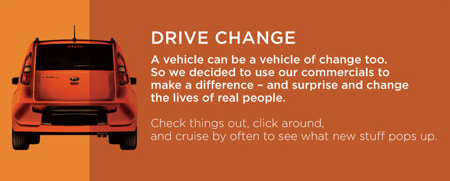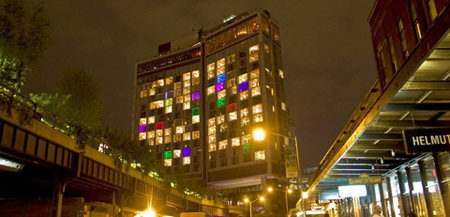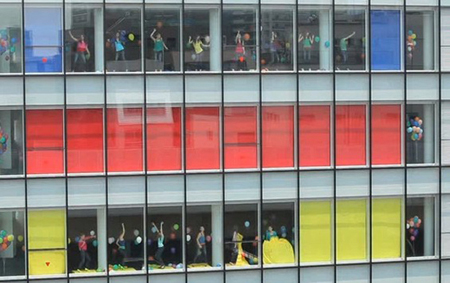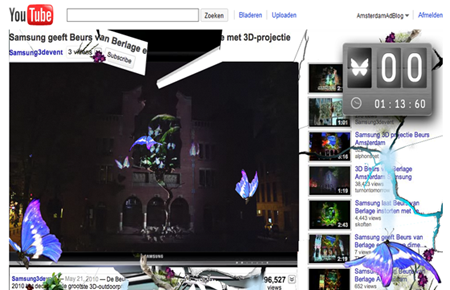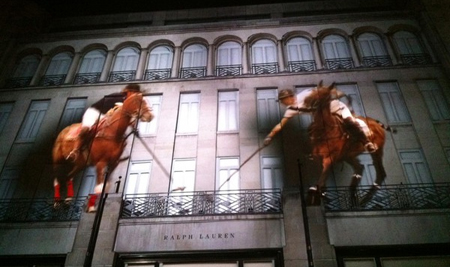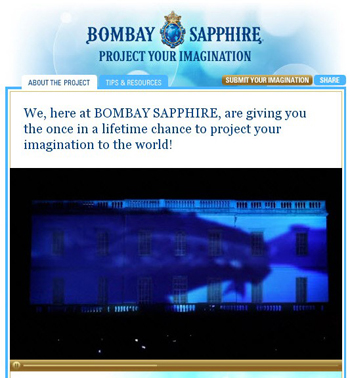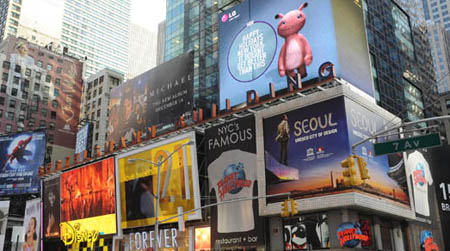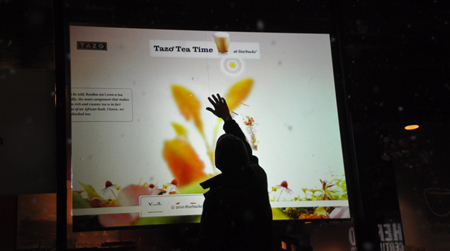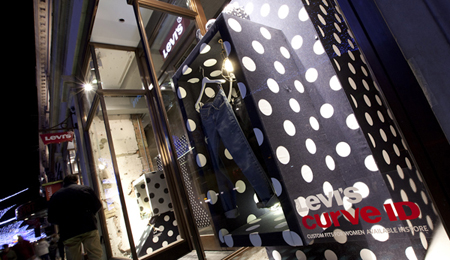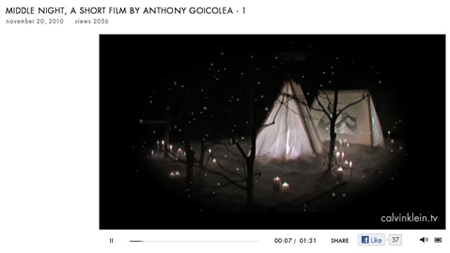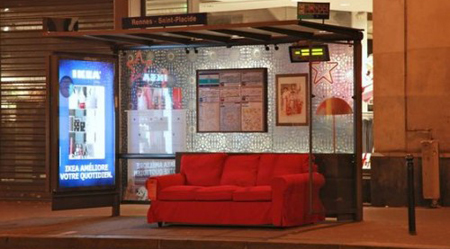In the third and the final chapter of our Brands and the City overview, we focused on brands’ projects which helped enrich city canvas and add more elements to the metropolitan life. Here we collected both projects with a social twist, revolving around the idea of making a city a better place to live, and works with a vivid advertising component, such as branded bus shelters, giant interactive billboards and shop windows, which broadened physical borders of the cities.
Heavy traffic is one of the problems of modern cities. BMW invited students of the European Institute of Design in Barcelona majoring in automotive design and fashion to address the problem by unveiling their own concepts of wearable means of transportation. The ‘Suits That Transport’ (El traje que te transporta) exhibit featuring the best works was opened in Barcelona this January.
Last October, the brand also announced its 6-year collaboration with The Solomon R. Guggenheim Foundation and Museum, which will “engage people in major cities around the globe, and inspire the creation of forward-looking concepts and designs for urban life.”
While BMW is focusing on futuristic innovation, Guinness is encouraging people to contribute to their communities by implementing their urban regeneration projects that might be quite simple and conventional, but are still very effective. Through its Bring It To Life Awards (the initiative’s name is the same as the brand’s ad tagline), the beer brand encouraged people aged 25–35 to submit ideas of reinvigorating their communities for a chance to win funding for the projects’ realization.
The idea of improving urban jungles settings and make them better suited for living was also employed by a range of other brands, including Heinz, Lay’s, Kraft Foods, Amway and Timberland that launched a series of initiatives aiming to make the city greener. In some way, they prepare the ground for the concepts predicted in the ‘Kitchens of 2040’ survey presented by IKEA. One of the trends is growing vegetables at home, and as for now Lay’s and Heinz are ‘testing’ it outside in the city streets.
Last summer, Frito-Lay presented a ‘Lay’s Mobile Farm,’ a 70-foot long, 10-foot wide and 14-foot high traveling greenhouse, to educate local people about gardening and provide them an opportunity to interact first-hand with plants. The initiative was rolling out in NYC, Boston, Detroit, Chicago, Los Angeles and Dallas.
Quite the same concept was employed by Heinz that created a ‘crop-up’ plot in Soho Square, London, giving passers-by an opportunity to ‘get closer to the nature’ and taste salad or sandwiches made of vegetables which had been picked from patches just several minutes before.
Kraft Foods’ brand Triscuit took the initiative on a broader scale by launching The Home Farming Movement across the USA, educating people on gardening via interactive online designation. Users also could read advice on the theme provided by fellow enthusiasts and experts and track the movement via the www.kraftbrands.com/homefarming website.
Amway and Timberland also tapped into the movement of making cities greener by their garden-oriented projects: last May, the cosmetic company encouraged volunteers to join the initiative by helping build seven community gardens across the United States and teaching kids how to maintain them, and in the fall of 2010 Timberland handed a set of grants to activists who made London greener through creating more green spots across the metropolitan area.
Kia and Sprite are improving the city in their own way, which doesn’t relate to creating something new, but is rather focused on restoring the old. The brands committed to improving urban locations with a series of bold projects: last year, Kia upgraded a city garden and court in Canada under its ‘Drive Change’ program, and Sprite is now encouraging U.S. basketball fans to nominate their local courts for a chance to have them revamped.
From social to more advertising oriented city overtaking projects. To promote the new collections, Target in the U.S. and Levi’s in Japan converted windows into the stage for dynamic displays. Last August, the retailer created a giant kaleidoscopic 20-minute show in NYC, which featured 66 dancers, who were moving synchronically in the windows to the original soundtrack recorded with a 30-piece orchestra and 10-member chorus. In its turn, Levi’s set promoting the new Curve ID line of jeans created with ‘shape, not style’ concept in mind had dozens of girls shaking their buttocks in the windows of a Tokyo skyscraper.
Some brands use project mapping instead of live models. Last summer, Samsung added a new dimension to the historic Beurs van Berlage in Amsterdam—the building was cracked and then ‘invaded’ by butterflies.
Ralph Lauren showed ‘where 5 senses meet’ using state-of-the-art technology on the façade of two Ralph Lauren’s flagship stores in NYC and London.
The secrets of the underwater world were disclosed in map projection by Bombay Sapphire in London last fall—the alcohol brand showed a story in navy-blue tones and encouraged creative consumers to submit their own ideas which could be later projected to the world in a series of new 3D ‘installations.’
While project mapping seems to be tomorrow of street advertising, interactive billboards and out-door prints with QR codes are a feature of today. The digital signs on Piccadilly Circus in London and New York’s Times Square ‘host’ all kinds of promotions, which are not always focused on advertising. For example, last Christmas season LG unveiled an interactive billboard on Times Square featuring a funny character to deliver only positive news (which also could be sent by passers-by).
Starbucks placed its interactive advertising board lower, encouraging the consumers in Toronto and Vancouver play a game by guiding a creature of their choice (a hummingbird, a dragonfly or a butterfly) through a journey aimed at collecting all the ingredients for Tazo teas.
The urban canvases are greatly changed during holiday seasons, especially in winter. There are a plethora of such projects demonstrating how brands can add to the city environment through their shop windows in major metropolitan areas, but we narrowed the range to only two of them, just as an example. Levi’s decorated the interior as well as the shop windows of its store in London with polka-dot textile and spooky denim elves, which rendered the spirit of Christmas in their own unconventional way.
Last November, shop-windows of select Calvin Klein stores were jazzed up by multimedia artist Anthony Goicolea. He merged snow globes, shadow puppets, kinetoscopes and flip books to created marvelous flicks, which were used as basis for window installations.
The trend of turning city bus shelters into more comfortable places isn’t new either, but is one of those that really change the city visually. IKEA is one of the brands which ‘customized’ these areas with a nice twist—the global furniture retailer took sofas to the streets (and subways) to make them look more like home spaces.
Read the first and second parts of Popsop’s city-inspired review.
